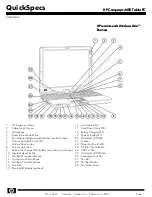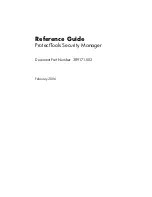
User’s Manual
Glossary-3
Glossary
A
adapter:
A device that provides an interface between two dissimilar
electronic devices. For example, the AC adapter modifies the power
from a wall outlet for use by the computer. This term also refers to
the add-in circuit cards that control external devices, such as video
monitors and magnetic tape devices.
allocate:
To assign a space or function for a specific task.
alphanumeric:
Keyboard characters including letters, numbers and other
symbols, such as punctuation marks or mathematical symbols.
alternating current (AC):
Electric current that reverses its direction of flow
at regular intervals.
analog signal:
A signal whose characteristics such as amplitude and
frequency vary in proportion to (are an analog of) the value to be
transmitted. Voice communications are analog signals.
ANSI:
American National Standards Institute. An organization established
to adopt and define standards for a variety of technical disciplines.
For example, ANSI defined the ASCII standard and other
information processing requirements.
antistatic:
A material used to prevent the buildup of static electricity.
application:
A group of programs that together are used for a specific task
such as accounting, financial planning, spreadsheets, word
processing, and games, etc.
ASCII:
American Standard Code for Information Interchange. ASCII code is
a set of 256 binary codes that represent the most commonly used
letters, numbers, and symbols.
async:
Short for asynchronous.
asynchronous:
Lacking regular time relationship. As applied to computer
communications, asynchronous refers to the method of transmitting
data that does not require a steady stream of bits to be transmitted
at regular time intervals.
AUTOEXEC.BAT:
A batch file that executes a series of MS-DOS
commands and programs each time you start the computer.
B
backup:
A duplicate copy of files kept as a spare in case the original is
destroyed.
batch file:
A file that can be executed from the system prompt containing a
sequence of operating system commands or executable files.
See also
AUTOEXEC.BAT.
binary:
The base two number system composed of zeros and ones
(off or on), used by most digital computers. The right most digit of a
binary number has a value of 1, the next a value of 2, then 4, 8, 16,
and so on. For example, the binary number 101 has a value of 5.
See also
ASCII.
















































